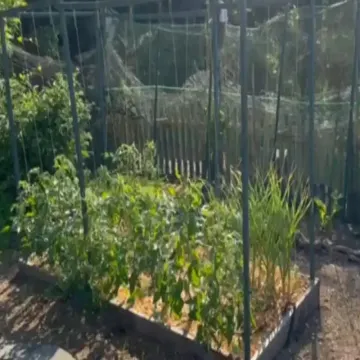Tomato plants are susceptible to several diseases and fungal infections, which can significantly impact their health and yield. Here's a summary of the most common diseases and fungi affecting tomato plants:
Early Blight (Alternaria solani)
- Symptoms: Dark brown to black spots with concentric rings on lower leaves; sunken lesions on stems and fruit.
- Prevention: Rotate crops, avoid overhead watering, use resistant varieties.
- Treatment: Remove affected leaves, apply fungicide if necessary.
Septoria Leaf Spot (Septoria lycopersici)
- Symptoms: Small, round, gray-centered spots on lower leaves; yellowing and leaf drop.
- Prevention: Proper spacing, avoid watering leaves, rotate crops.
- Treatment: Remove infected leaves, apply fungicide.
Fusarium Wilt (Fusarium oxysporum f. sp. lycopersici)
- Symptoms: Yellowing and wilting of lower leaves; brown streaks in stems.
- Prevention: Use resistant varieties, solarize soil, practice crop rotation.
- Treatment: Remove infected plants, sterilize tools, solarize soil.
Late Blight (Phytophthora infestans)
- Symptoms: Irregular, water-soaked gray-green spots on leaves; black spots on stems and fruit.
- Prevention: Plant resistant varieties, ensure good air circulation, avoid overhead watering.
- Treatment: Remove affected plants, apply copper-based fungicides.
Tomato Mosaic Virus (ToMV)
- Symptoms: Mosaic patterns of light and dark green patches on leaves; stunted growth.
- Prevention: Sanitize tools, remove infected plants, control aphids.
- Treatment: Remove infected plants, control insect vectors, disinfect tools.
Verticillium Wilt (Verticillium dahliae)
- Symptoms: V-shaped yellowing patterns on leaves; browning of veins.
- Prevention: Rotate crops, use resistant varieties, avoid over-fertilization.
- Treatment: Remove affected plants, solarize soil, ensure good drainage.
Bacterial Spot (Xanthomonas campestris pv. vesicatoria)
- Symptoms: Small, dark, water-soaked spots on leaves, stems, and fruit.
- Prevention: Use certified disease-free seeds, rotate crops, avoid overhead watering.
- Treatment: Remove infected plants, apply copper-based bactericides.
Bacterial Speck (Pseudomonas syringae pv. tomato)
- Symptoms: Small, dark specks on leaves and fruit; yellow halos around spots.
- Prevention: Use resistant varieties, avoid overhead watering, rotate crops.
- Treatment: Apply copper-based bactericides, remove infected leaves.
Tomato Spotted Wilt Virus (TSWV)
- Symptoms: Bronzed or purplish spots on leaves; stunted growth; ring patterns on fruit.
- Prevention: Control thrips (insect vector), remove infected plants, use resistant varieties.
- Treatment: Remove infected plants, control thrips with insecticides.
Bacterial Canker (Clavibacter michiganensis subsp. michiganensis)
- Symptoms: Wilting leaves, browning leaf edges, white scabby spots on fruit.
- Prevention: Use disease-free seeds, rotate crops, avoid injuring plants.
- Treatment: Remove infected plants, disinfect tools, apply copper-based bactericides.
Prevention & Management:
- Crop Rotation: Avoid planting tomatoes in the same spot year after year.
- Resistant Varieties: Plant disease-resistant tomato varieties.
- Proper Spacing: Ensure good air circulation to reduce humidity and fungal growth.
- Mulching: Mulch around plants to prevent soil-borne diseases from splashing onto leaves.
- Pruning: Remove infected leaves and keep the plant pruned to reduce the spread of disease.
- Fungicides: Use fungicides for managing fungal diseases, especially when early signs are observed. Organic options include neem oil and copper sprays.

